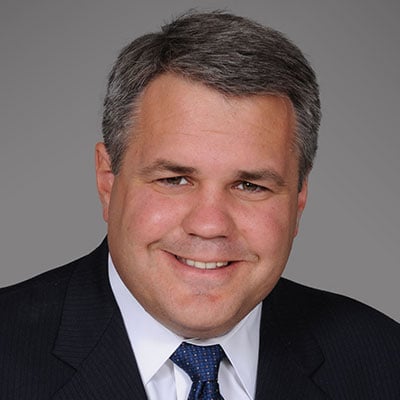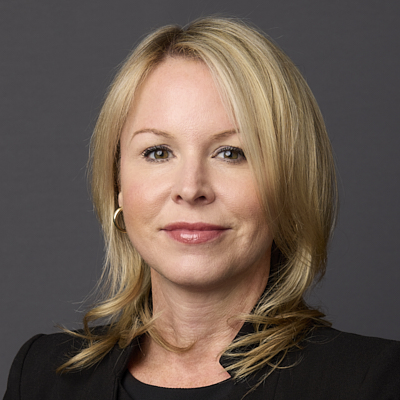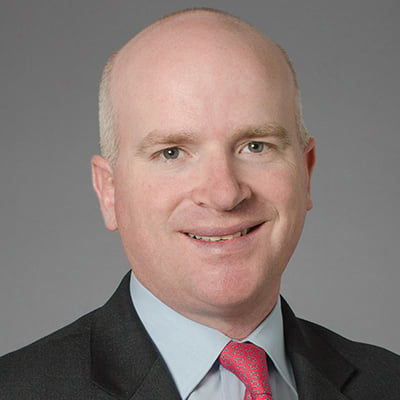CMS and HHS-OIG Issue Final Rules for Anti-Kickback Statute and Stark Law
On December 2, 2020, the U.S. Department of Health and Human Services ("HHS") Office of Inspector General ("OIG") and Centers for Medicare and Medicaid Services ("CMS") issued final rules expanding and modifying existing and adding new regulatory "safe harbors" and exceptions, respectively. These Anti-Kickback Statute ("AKS") safe harbors and Ethics in Patient Referrals Act (the "Stark Law") exceptions, when squarely met, afford protection for certain financial relationships between healthcare providers and other entities that are subject to these laws.
The final rules, with one exception, go into effect on January 19, 2021. The rules are part of the "Regulatory Sprint to Coordinated Care" that HHS launched in 2018 in an effort to encourage innovative arrangements designed to improve the quality of care, health outcomes, and efficiency in our health care system. In furtherance of this sprint, the final rules aim to remove regulatory barriers that have stymied coordinated and value-based care, and do so by expanding the scope of protections from liability under the AKS and Stark Law. The new safeguards, like the pre-existing ones, are fact-specific and require thoughtful adherence by parties seeking protection from potential AKS and Stark Law liability; however, with respect to the AKS, and as reiterated by HHS-OIG in its preamble to the AKS final rule, failure to meet a safe harbor does not render an arrangement unlawful per se.
Value-Based Enterprises and Arrangements are Central to the New and Modified Safe Harbors and Exceptions
The final rules announced by OIG and CMS center on the concept of "value-based enterprises" ("VBEs") and "value-based arrangements" between participants in VBEs. A central purpose of the modified and new safe harbors and exceptions is to provide greater flexibility for the exchange of remuneration among participants in a VBE to permit incentive structures that promote quality in patient care and reduce payor costs.
The final rules largely adopt the definition of VBE set forth in the proposed rules and define VBE as two or more participants collaborating pursuant to a written arrangement to achieve at least one of these "value-based purposes": (1) coordinating and managing the care of a target patient population; (2) improving quality of care for a target patient population; (3) appropriately reducing costs to payors while maintaining quality of patient care; or (4) transitioning from health care delivery and payment mechanisms based on the value of items and services provided to mechanisms based on the quality of care and control of costs of care for a target patient population.
Significantly, unlike most other AKS safe harbors and Stark Law exceptions, the final rules for value-based arrangements do not include fair market value requirements or prohibitions on taking into account the volume or value of referrals.
Most Arrangements with Pharmaceutical Manufacturers, Medical Device Manufacturers/Suppliers, Durable Medical Equipment Manufacturers/Suppliers, and Laboratories Will Not Be Protected under the Value Based Safe Harbors and Exceptions
The proposed rules published by both OIG and CMS excluded pharmaceutical manufacturers, suppliers and distributors of durable medical equipment, prosthetics, orthotics or supplies ("DMEPOS"), and laboratories, from being "participants" in a VBE due to concerns that their dependence on physician prescriptions and referrals could create an incentive to misuse the safe harbors and exceptions.
In the final rules, OIG and CMS reversed course somewhat by permitting pharmaceutical manufacturers, distributors and wholesalers, pharmacy benefit managers, freestanding laboratory companies, compounding pharmacies, manufacturers of medical devices and supplies, medical device distributors and wholesalers, and providers of DMEPOS, to be VBE "participants." However, with the exception of in-kind contributions of digital health technology by medical device and DMEPOS entities, all of these entity types are prohibited from receiving protection under the applicable value-based Stark Law exception or safe harbor, although other safe harbors and exceptions may be available to protect such remuneration.
Highlights of Specific AKS Safe Harbors and Stark Law Exceptions
The "Care Coordination Arrangements" Safe Harbor
The "Care Coordination Arrangements" safe harbor provides an AKS safe harbor for in-kind remuneration (for example, a hospital's provision of a nurse coordinator to a skilled nursing facility at no charge to facilitate patient transitions) between VBE participants pursuant to a value-based arrangement. However, in-kind remuneration cannot be used for administrative purposes by the recipient or benefit patients (other than incidentally) outside of the VBE's target patient population.
To qualify for the safe harbor, the arrangement must: (1) be commercially reasonable; (2) be documented in a written agreement that describes the value-based activities to be undertaken; (3) define the target patient population; and (4) specify at least one specific, evidence-based outcome measure that the agreement is intended to advance. The agreement must also document the cost of the in-kind remuneration to the offeror and, notably, the recipient must pay at least 15% of the offeror's cost to ensure that the recipient is incentivized to benefit the target population. Additionally, the VBE is required to review the arrangement at least annually to determine whether the arrangement was achieving its stated outcomes, and terminate the arrangement within 60 days if the VBE determines that the arrangement is not advancing its stated goals or is adversely affecting patient care.
The “Downside Financial Risk” Safe Harbors
The OIG's final rule also creates two distinct AKS safe harbors for VBEs and VBE participants who bear "substantial" or "full" downside financial risk as a result of their agreements with payors. A VBE is deemed to have assumed downside financial risk where, for example, it receives partially or fully capitated payments from a payor for a target patient population, or where a VBE shares in the payor's "losses" as determined by comparing costs to historical expenditures.
The "Downside Financial Risk" safe harbors apply to both in-kind and monetary remuneration between VBEs and VBE participants. This safe harbor only applies, however, where the VBE participant "meaningfully shares" in the VBE's downside financial risk (for example, where the VBE participant must share in any loss payment made by the VBE, or the VBE participant is subject to full or partially capitated payment from the VBE). Moreover, the safe harbors apply only to remuneration that is directly connected to the VBE's value-based purposes and that is primarily used to engage in value-based activities directly connected to the items or services as to which the VBE has assumed downside financial risk.
CMS's final rule also includes parallel exceptions for physician participation in value based arrangements (similar to OIG's care coordination arrangements), meaningful downside risk arrangements and full financial risk arrangements. These exceptions both largely mirror the OIG requirements above and also reflect the narrower applicability of the Stark Law. However, unlike the AKS, an arrangement to which the Stark Law would otherwise apply must meet all elements of the applicable Stark Law exception.
The “Patient Engagement and Support” Safe Harbor
OIG's final rule creates a new safe harbor for "patient engagement tool or supports" furnished directly by a VBE participant to patients in the VBE's target population where such tools or supports are directly connected to specified goals, including: adherence to treatment/drug regimens; adherence to a follow-up care plan; disease/health condition management; improving health outcomes; and ensuring patient safety. All services must be recommended by the patient's personal licensed healthcare provider.
This safe harbor applies only to in-kind items, goods, or services and does not extend to cash or cash equivalents. The safe harbor is capped at $500 per year, measured by the fair market value to the recipient. Similar to the VBE safe harbors, manufacturers of devices or medical supplies may provide digital health technology to a VBE's target population; contributions by pharmaceutical manufacturers, suppliers and distributors DMEPOS, and laboratories are not eligible for safe harbor protection.
Under existing law, arrangements that fit the new safe harbor are also protected from the Civil Monetary Penalty Law's ("CMPL's") prohibition on beneficiary inducements.
Expansion of the AKS Personal Services and Management Contracts Safe Harbor to Include Outcomes-Based Payment
OIG's final rule also expands the existing AKS safe harbor for personal services and management contracts to accommodate contracts where the agent's compensation is dependent on the achievement of particular outcomes. Under the existing safe harbor, contracts for personal services and management contracts must specify the agent's aggregate compensation in writing. Contracts for part-time or periodic services must also specify the timing, duration and amount of compensation for the periodic services to be provided.
The final rule modifies the existing safe harbor to allow for contracts that do not specify the agent's aggregate compensation so long as they clearly set forth the methodology for determining the agent's outcomes-based compensation. This expansion to the safe harbor applies only to outcomes-based compensation tied to specific, evidence-based measures that relate to improving quality of care or reducing costs to payors while improving or maintaining quality of care to patients. Notably, the expansion does not apply to outcomes that relate solely to internal cost savings by the principal or that are based solely on patient satisfaction or convenience.
The "CMS-Sponsored Care Delivery and Payment Arrangements" Safe Harbor
OIG's final rule creates a new safe harbor for care delivery and payment arrangements among participants in CMS-sponsored model arrangements and model patient incentive programs. Under existing law, programmatic waivers from AKS and CMPL liability must be provided by OIG a case-by-case basis with respect to new CMS model programs. The new safe harbor assumes that, since CMS-sponsored programs are subject to close CMS oversight, there is less risk of fraud and abuse, and therefore less OIG oversight is required. The safe harbor applies to remuneration under a CMS-sponsored program so long as the remuneration is consistent with the programmatic requirements of the specific CMS model. However, the safe harbor does not protect arrangements or patient populations outside of the applicable CMS model and the safe harbor protection terminates upon termination of participation in the model or termination of the model as a whole.
Clients with questions regarding the final rule discussed above should contact one of the attorneys listed below.






